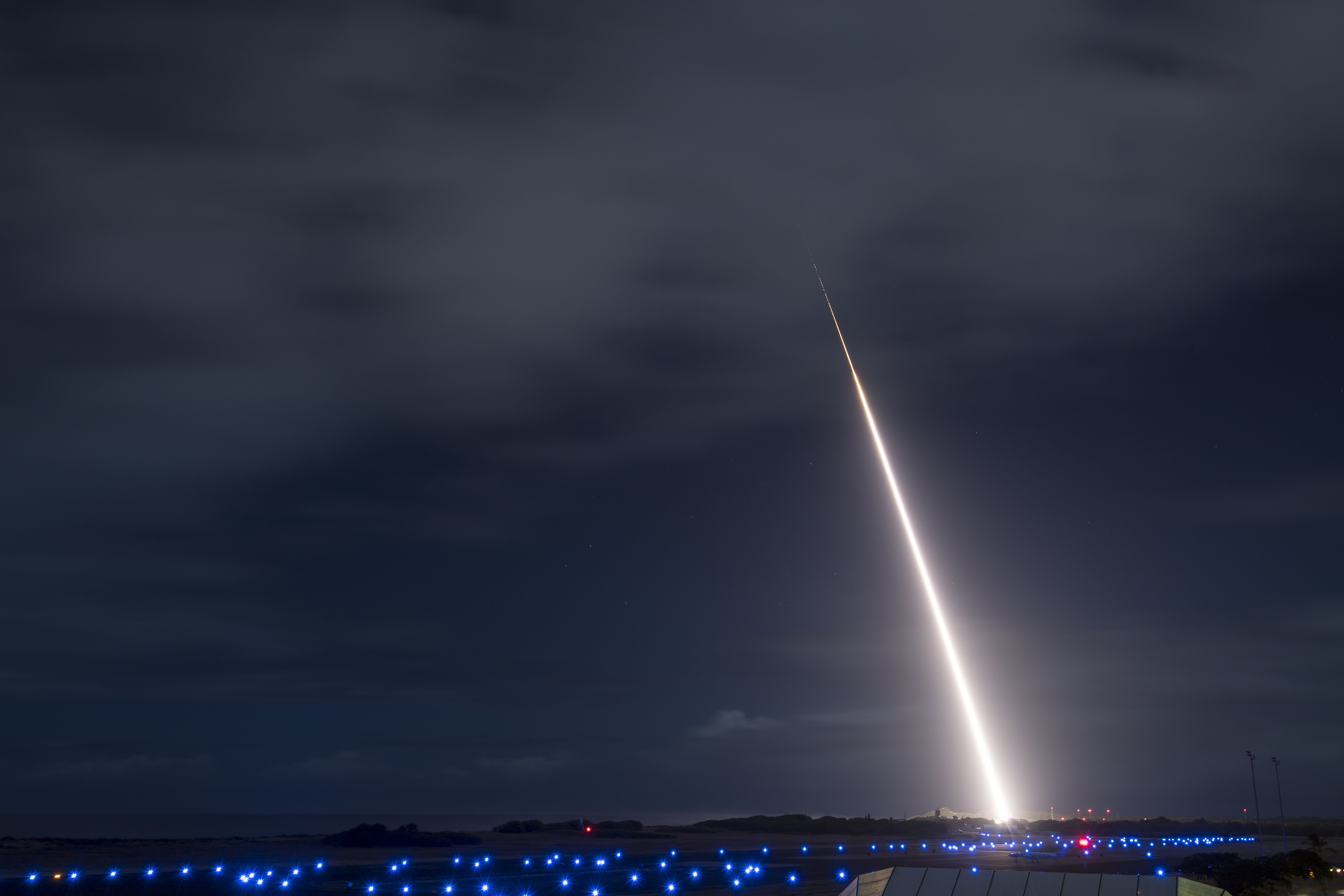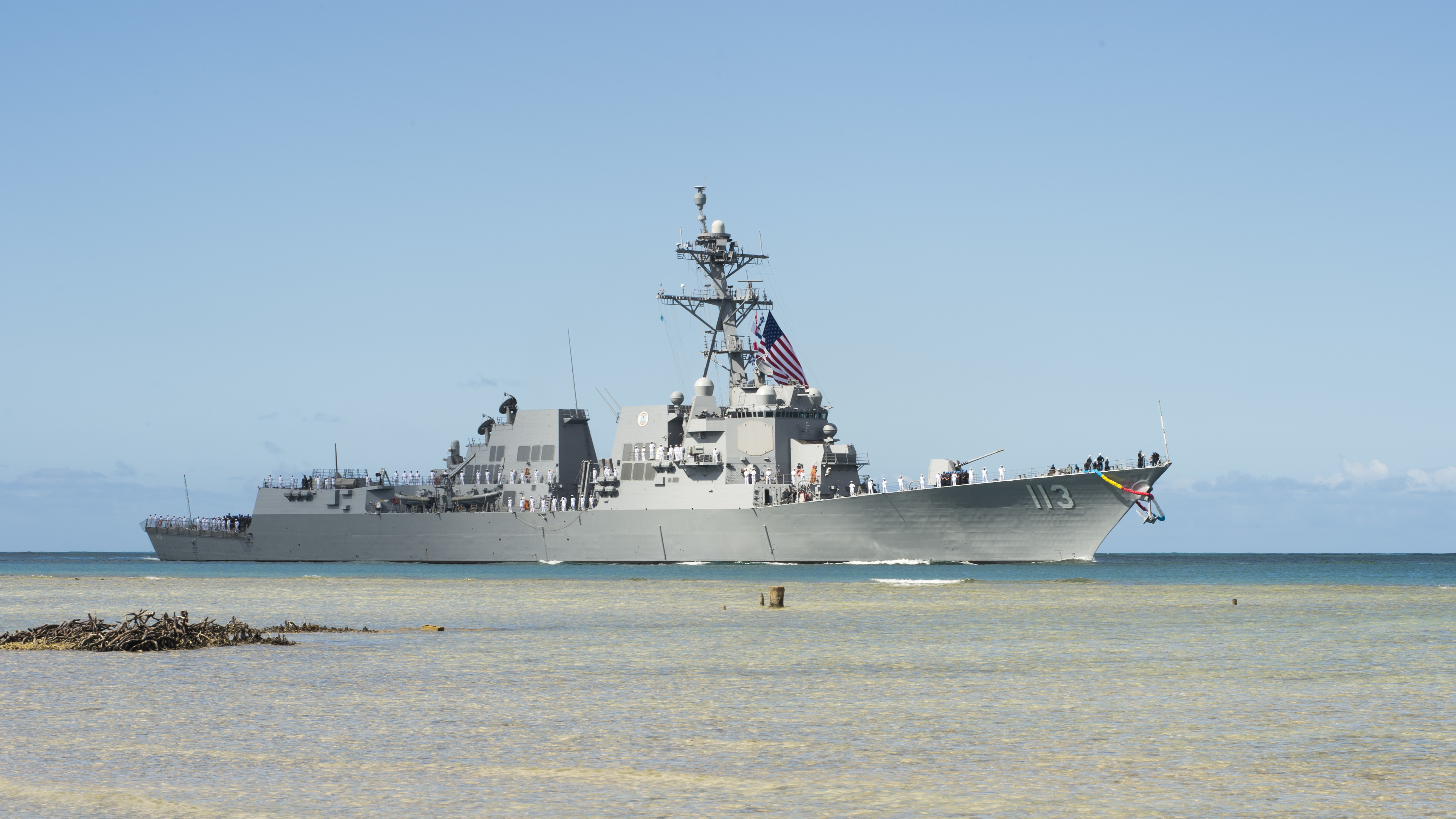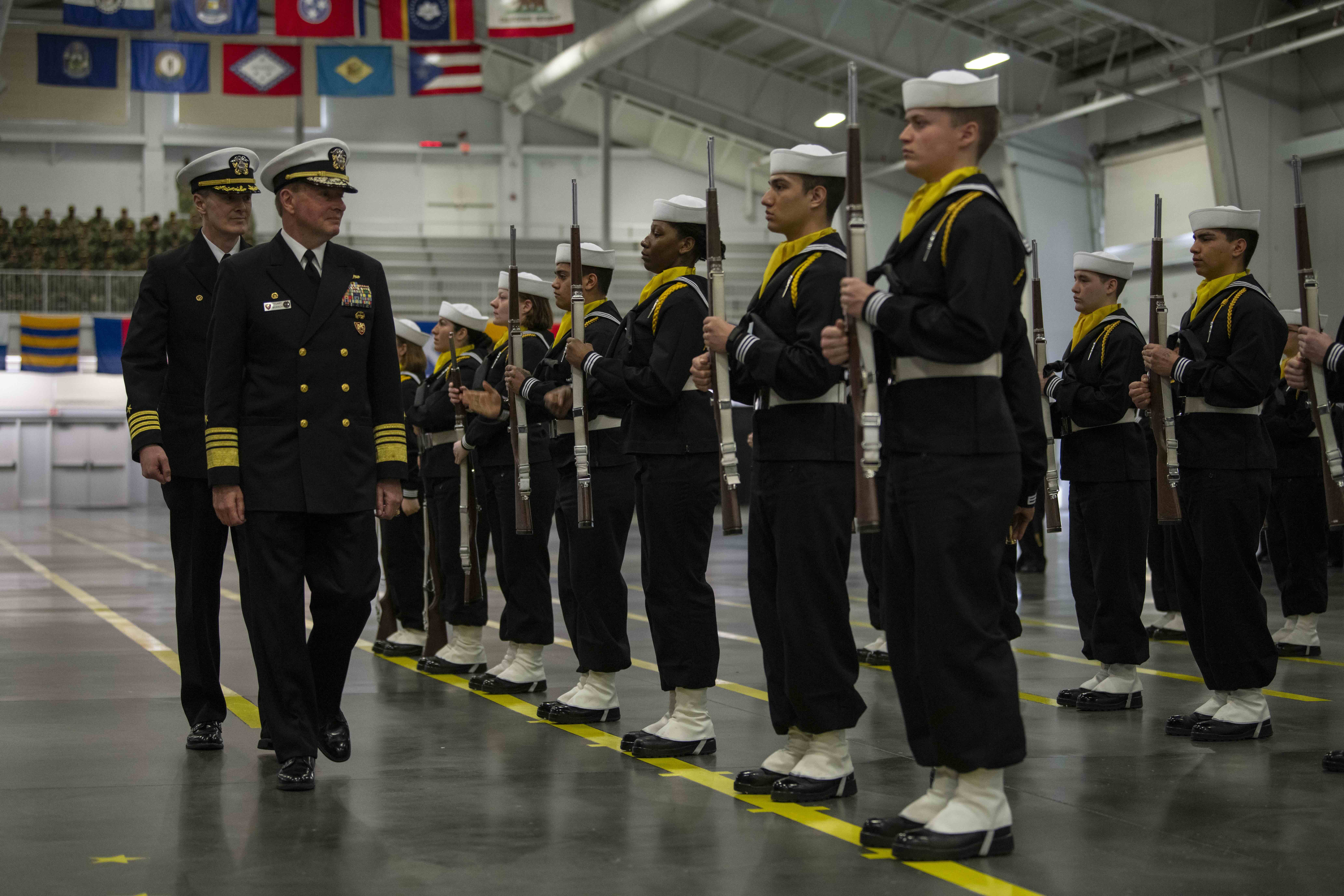
This post has been updated to correct the home port of USS John Finn. It is based in San Diego, Calif.
The Missile Defense Agency is nearing its planned defense-of-Hawaii test event with an Arleigh Burke destroyer and a Standard Missile-3 Block IIA, to prove the ship can serve as a back-up to ground-based homeland defense systems if needed.
The FTM-44 flight test, which was planned for May but postponed due to COVID-19-related restrictions, would prove that the SM-3 IIA could go beyond its originally designed scope and be used to stop an intercontinental ballistic missile, MDA Director Vice Adm. Jon Hill said in a briefing online this week. If successful, the destroyer and SM-3 IIA pairing would add another layer to the layered homeland defense model the MDA is developing.
An ICBM target is on station on Kwajalein Atoll in the Marshall Islands, and San Diego-based USS John Finn (DDG-113) is ready to conduct the test, Hill said.
He did not specify when the test would take place but said that it’s congressionally mandated to happen by the end of the year and that MDA and the Navy are making final adjustments based on ongoing COVID restrictions.
“We’ll be launching the ICBM, the ship will maneuver and launch an SM-3 Block IIA outside its design space to take on an intercontinental ballistic missile track. It’s going to be a pretty great event and we’re looking forward to that,” he said, calling it “the first empirical data capture” event to prove that the SM-3 IIA can be successful against this type of threat.
If successful, he said the Navy would have to work out how its warfighters would employ this homeland defense capability and which agencies they’d have to coordinate with, but he said the first step is proving it is technologically feasible.

Even as MDA pushes the boundaries of what’s possible for Navy ships and weapons to contribute to ballistic missile defense for the homeland, Hill said he also has big hopes for the Navy’s ability to contribute to defense against hypersonic weapons as well.
Today, a destroyer or cruiser equipped with an SM-6 would be the primary defense for an aircraft carrier at sea – with the missile going after its target in the terminal phase as it nears the aircraft carrier. Hill said relying on terminal-phase engagement with an incoming threat is risky – if the defensive system misses, there’s little time to reengage – and that MDA is focused on trying to create a new network of sensors and shooters so that hypersonics can be hit earlier in their glide paths.
“Where we’re going in the future is to reach back into that trajectory, into that glide phase, where the hypersonic threat is the most vulnerable. That’s where it’s bleeding off energy, it’s not maneuvering as much, it’s pretty easy to track. And we know that based on real-world data collects,” he said.

Hill said MDA had “a glide-phase prototype effort that we’ve been working with industry,” but he explained that MDA was taking a pause to reconsider the way forward. Hill said the ability to sense and track a threat was the number-one priority for this effort, and while MDA has a vision for a “more elegant solution” in the longer-term, MDA needs to field a hypersonic defense system much sooner than the program was on track for.
As a result, MDA will pursue two tracks.
In the shorter term, “we can take advantage of terrestrial-based and mobile sea-based systems today to get the tracking data and get that over to a system” to manage the tracking data and pass it to a shooter on land or at sea.
“So we can now take a forward-based ship’s sensor, take what it sees, pass that to a shooting ship and then get the right weapon up to the glide phase. And that’s what we’re working our way through now.”
For the longer term, MDA will continue investing in the science and technology that underpins a hypersonic defense system – with global sensing and tracking coverage, and a new interceptor optimized to hit a hypersonic weapon during the glide phase – that would be a primary defense during the weapon’s glide phase and leave the Navy’s ship-based SM-6 capabilities as a terminal-phase backup plan.





